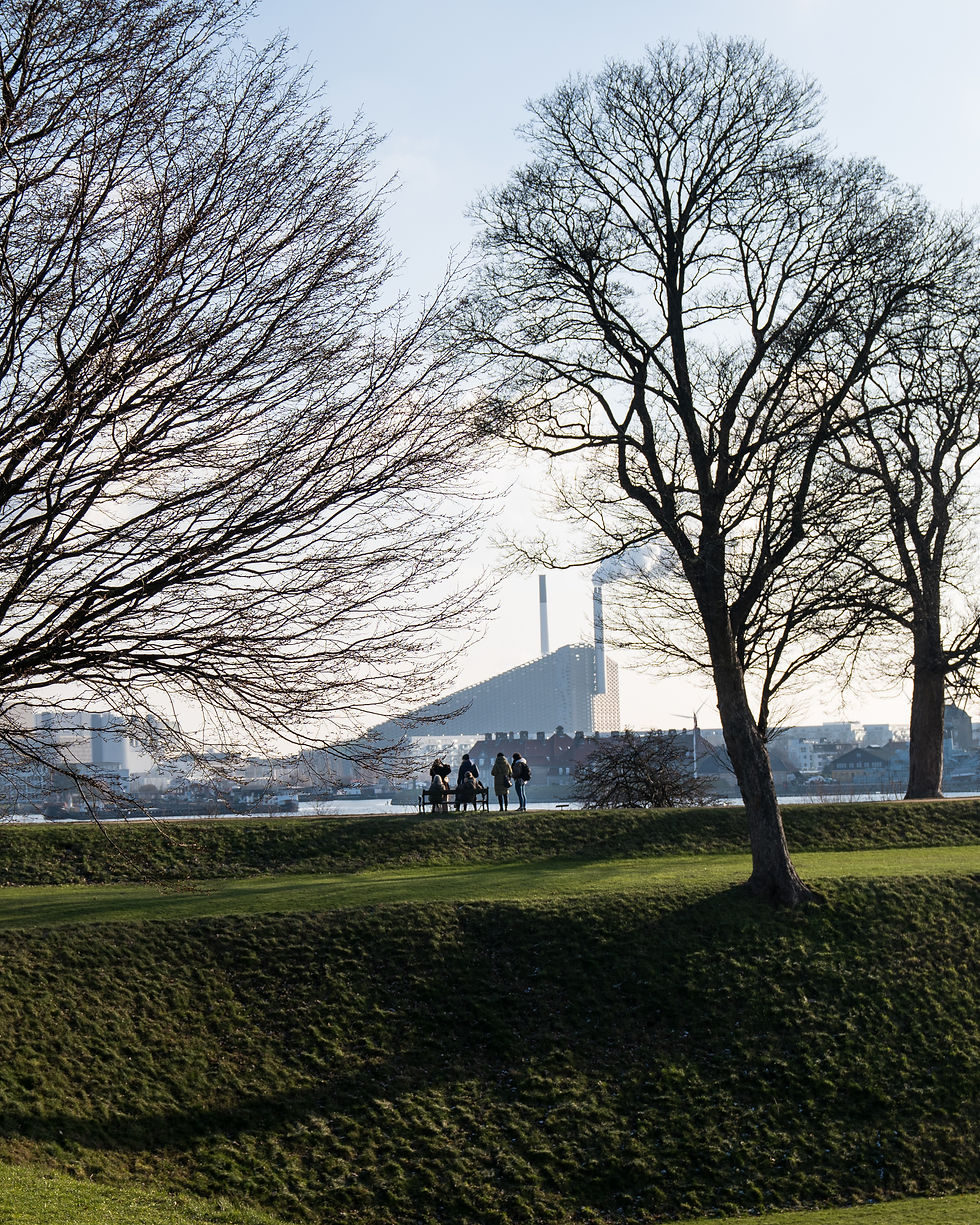In plain sight - Copenhagen's not-so-hidden gems.
- The International
- Aug 8
- 3 min read

A modern city by historical standards, Copenhagen remains rich in history despite its lack of an ancient legacy. In Plain Sight acquaints Copenhagen’s expat community with the fascinating tales of their adoptive home city.
Photographs: Visit Copenhagen
Text: Jess Hearne
On the eastern edge of Copenhagen lies one of the best-preserved fortresses in Europe. Today, trees line the path, ducks swim in the surrounding water, and grass adorns the old ramparts, but Copenhagen’s Citadel, known in Danish as Kastellet, was once a formidable structure designed for war.
The shield of Copenhagen
The construction of Kastellet, one of King Christian IV’s many contributions to the capital, began in the early 1600s. The kingdoms of Denmark and Sweden had been at odds for over 150 years, often with little political motivation. The frequency of war meant that Copenhagen needed better defences, particularly in the east, where the city was most vulnerable to invasion by sea. Construction on a fortification near the harbour began in 1626, intended to guard the entrance to the port.
It wasn’t until after Christian IV’s death that the Citadel took the form we know today. It’s need highlighted by the Swedish Siege of Copenhagen from 1658-1660, Dutch engineer Henrik Rüse was recruited to rebuild and extend the fortress, which was completed in 1662. Constructed in the Italian Bastion Fort style, Kastellet looked like a star from above, with five bastions (or “points”) connected by high earth walls, a wide moat and two strong gates, known as the King’s Gate and the Norway Gate. It followed the classic principles of Renaissance military architecture, protecting against cannon fire and attackers scaling the walls.
"The frequency of war meant that Copenhagen needed better defences, particularly in the east, where the city was most vulnerable to invasion by sea."

The living walls of Kastellet
The Citadel was designed with both defence and community in mind. A tunnel in the southern rampart wall leads to a cobbled street lined with neat red barracks known as the Rows. These six terraces once housed soldiers in simple dorms and are now named for their historic roles, such as Artillery Stock and General Stock. Nearby stands the Commander's House, a Baroque residence from 1725 with a decorated pediment and the monogram of Christian VII. Other notable buildings include the Powder House, built for storing explosives but later used as a jail after a city-centre blast in 1779 raised safety concerns, and the Kastelskirken, a heavy Baroque church with openings for prisoners to hear services. A walk along the ramparts leads to the windmill, rebuilt in 1847 and still working today.
Kastellet was pivotal in several conflicts after its completion. It played a key role in defending Copenhagen against Swedish forces in 1659 and again during the Battle of Copenhagen in 1807, when the British navy bombarded the city during the Napoleonic wars. Yet, its most important battles may have been the ones that never came, simply because the powerful structure served as such an ominous warning to potential invaders.
Military technology had come on leaps and bounds by the late nineteenth century, rendering the old cannons inadequate in holding back a modern army. The structure remained under military control, but as the city grew around the Citadel, its role became more administrative and ceremonial. The buildings were still used, but the gunpowder stores were converted into offices, and the barracks housed fewer soldiers. Kastellet was taken over by German forces during the occupation of Denmark in WWII, but returned to Danish hands in 1945. Today, the structure is owned by the Danish Ministry of Defence and, despite still being an active military area, it serves primarily as a peaceful public space.

History and harmony
Unlike many of the buildings in the In Plain Sight series, the Citadel has never had a period of disrepair. Despite changes in function and form, the glory of the structure has always been maintained. The doors are freshly painted, the hedges are neatly trimmed, and its gates are open every day. Visitors can book guided tours and explore the museums, the ramparts are a popular place for locals to jog, and the church still holds regular services. Soldiers in uniform still pass by, but so do cyclists, school children and tourists.
Today, Kastellet feels more like a park than a military base, but reminders of its past are located at every turn. Old cannons are placed on the bastions, and a monument near the church honours Danish soldiers who died in wars abroad. The structure itself has hardly changed in 350 years, but its function is shaped by both history and modernity. Ultimately, the Citadel is proof that, over time, a place of conflict can become a place of peace.
To plan your visit to Copenhagen’s Citadel, visit https://www.forsvaret.dk/da/side/kastellet/ (in Danish)









